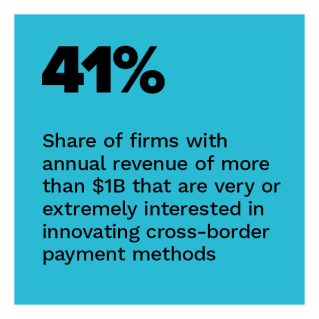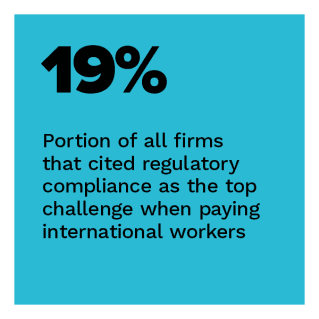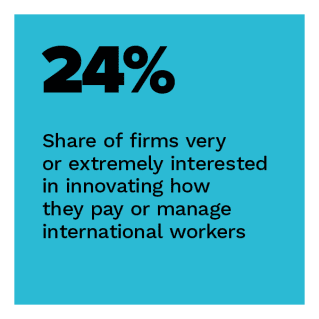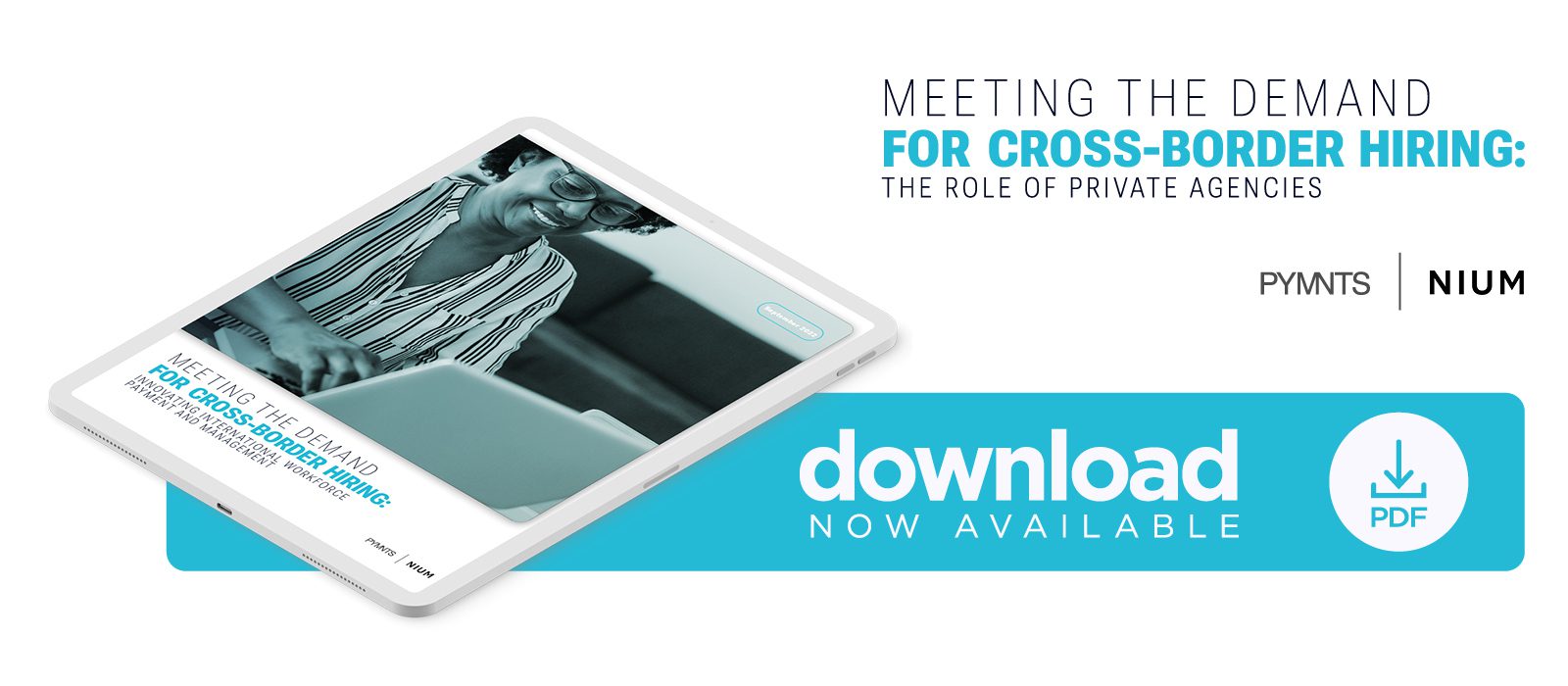Compliance, Cybersecurity Are Top Challenges Firms Face Paying International Workers

Despite skyrocketing growth in international hiring by firms in the United States and the United Kingdom, assembling an international workforce remains a complex undertaking. Hiring international talent often necessitates flawless compliance with local regulations while also handling more complicated human resources (HR) processes in managing and paying these workers.
PYMNTS’ data reveals that firms with payment-related challenges tend to use private agencies to recruit workers more than firms that do not have payment struggles. Alternately, these firms could leverage a technology solution to streamline the payment and management of international hires. Nearly 70% of firms highly interested in innovating cross-border worker payment methods are currently innovating or plan to do so within six months.
“Meeting The Demand For Cross-Border Hiring: Innovating International Workforce Payment and Management,” a PYMNTS and Nium collaboration, examines why firms are innovating international payment and management systems, providing a deep dive into the demographics of firms currently innovating, those most interested in innovating and those that are not yet interested in innovation. The report is based on a survey that occurred between March 10 and March 29 of 250 executives with leadership responsibilities in accounts payable, payroll or payments at U.S.- and U.K.-based companies with more than $100 million in annual revenue.
 More key findings from the study include:
More key findings from the study include:
• One-quarter of firms overall are very or extremely interested in improving how they pay or manage international workers. Among all firms surveyed, 52% said they are at least somewhat interested in innovating payment methods for cross-border workers, and 24% are very or extremely interested. Among firms that annually made more than $1 billion, 41% are very or extremely interested in innovating the methods used to pay international workers, and 53% are slightly interested or somewhat interested in payment innovation.
• Regulatory compliance is the top challenge firms face when paying an international workforce.  Nineteen percent of all firms cited the need to comply with regulations as the top challenge when paying cross-border workers. Firms that spend less than 25% of their payroll budget on international workers were the most likely to cite regulatory compliance as the top issue; 32% did so. We also found that 47% of all firms cited taxes as a challenge when paying international workers; 14% of firms listed it as the number one challenge.
Nineteen percent of all firms cited the need to comply with regulations as the top challenge when paying cross-border workers. Firms that spend less than 25% of their payroll budget on international workers were the most likely to cite regulatory compliance as the top issue; 32% did so. We also found that 47% of all firms cited taxes as a challenge when paying international workers; 14% of firms listed it as the number one challenge.
• Firms managing international workers consider cybersecurity to be a top challenge. Cybersecurity was cited by 40% of firms as a challenge when managing cross-border workers, and 17% called it the number one challenge. While 35% of firms cited cultural issues as a challenge, just 7.6% listed this as the number one challenge, indicating that cultural issues, though common, are not particularly impactful to business operations.
Interest in innovating payment methods indicates that firms face challenges paying and managing their international workforce, with many seeking a technology solution to streamline cross-border payments.
To learn more about how U.S. and U.K. firms are innovating to better manage and pay cross-border workers, download the report.
